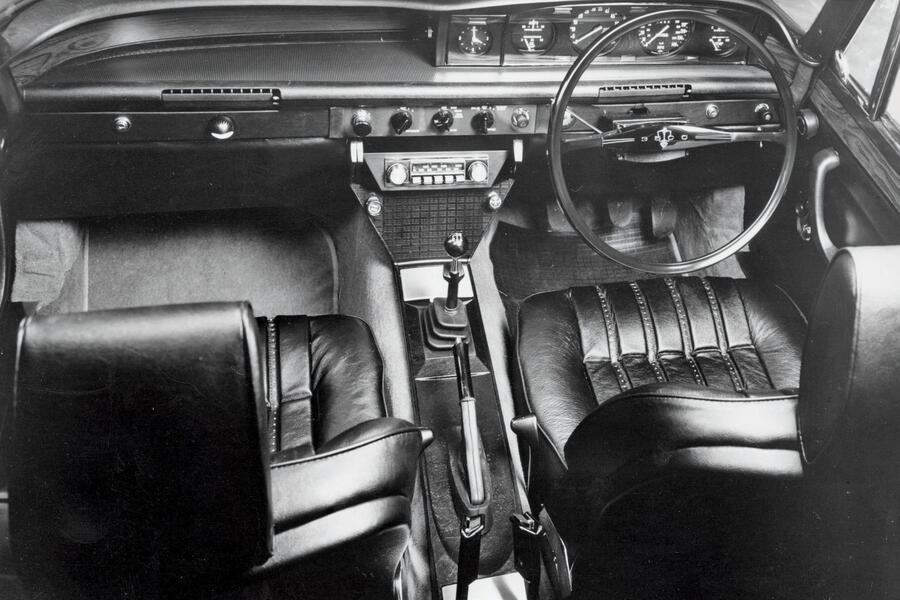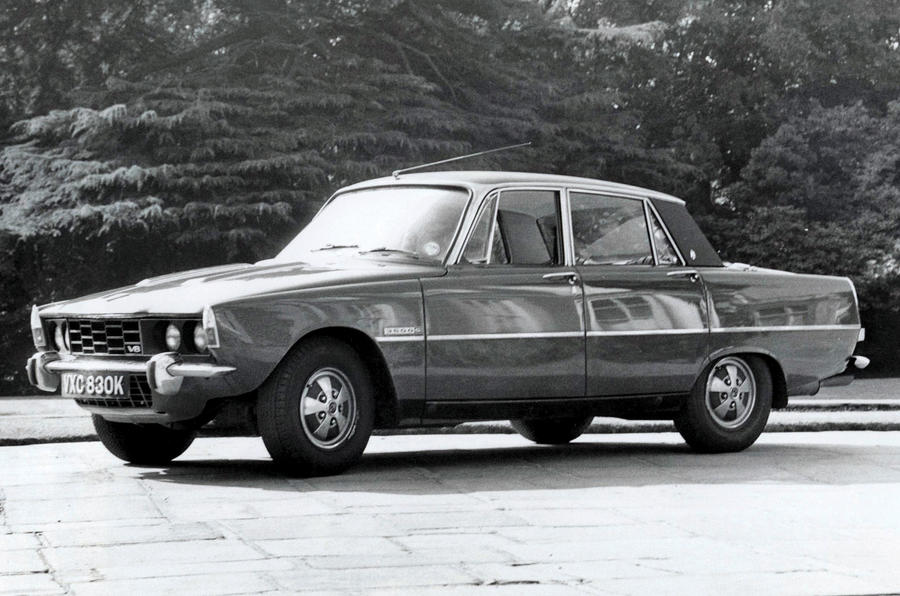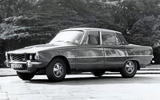Tested 21.10.71
We were already fans of the P6 V8, but it was hamstrung by a mandatory torque-converter auto. The S model’s manual ’box perfected the recipe.
The four-speed manual gearbox from the 2000 was strengthened for the 3500S and a revised exhaust system slightly increased power over the auto. The manual, like the auto, used two SU carbs to feed its aluminium-intensive V8.
Losing the torque converter greatly increased throttle response without sacrificing smoothness and flexibility, although transmission whine irritated. A comfortable cruising speed was 100mph despite some wind noise, and economy impressed, too. All-round disc brakes performed well.
Subscribe to the Autocar Archive today
The supple ride was in line with the 3500S’s overall refinement and variable-ratio steering worked nicely. Roll was quite pronounced and the car generally understeered but it could be coaxed into a controlled powerslide.
Seating was nicely adjustable and supportive, and the instrumentation excellent. Fit and finish was superb both inside and out, and a narrow boot was our only interior complaint.

For: Performance, economy, ride, build quality
Against: Noisy transmission, wind noise, cramped boot
​What happened next...
The four-cylinder P6 jumped from 1978cc to 2205cc in 1973 in the 2200SC (single carb) and 2200TC (twin carb) models, making 98bhp and 115bhp respectively. They continued production next to the V8s until 1976, by which time British Leyland’s build maladies had taken their toll. The P6 was replaced by the SD1, which kept the 3.5-litre V8 but reverted to a live rear axle.








Join the debate
Add your comment
I sold quite a few of these when they were new -back in the day.
They seemed pretty quick (if a little wallowy) at the time..... the 0-60 time looks preposterous now though.
The boot was a bit limited due to the spare wheel taking up a chunk of what was essentially a narrow car (you couldnt seat 5 unlike Jags and Triumph 2.5's which housed the spare wheel under the boot and were wider cars). A few paid for the option of the boot lid mounted spare wheel, but this looked ridiculous and made lifting the bootlid onerous - not to mention depositing sticky residue all over the bootlid paint.
The P6 safety features were fantastic for the time....the only thing I really didnt like about them was the super skinny steering wheel!
The Police loved them!